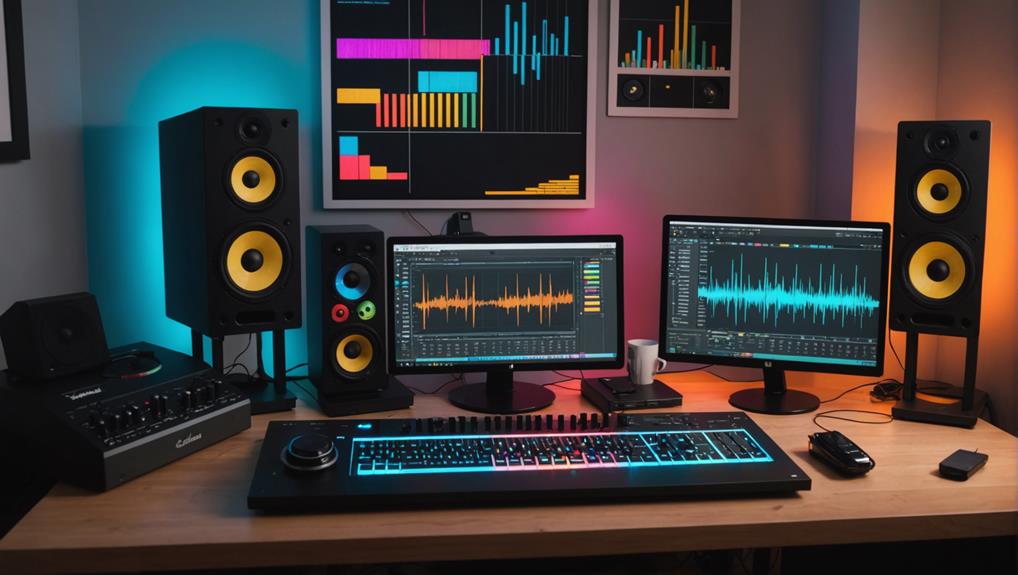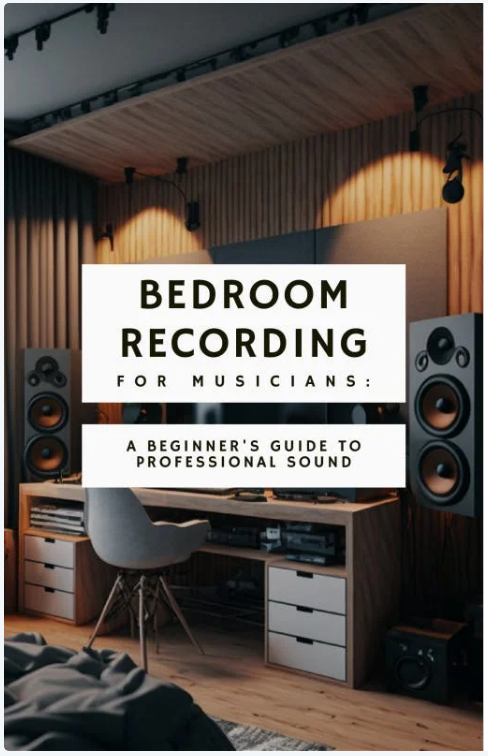To enhance your home studio mixing workflow, start by organizing your tracks with clear names and colors for easy navigation. Set initial levels by zeroing all faders and gently introducing key elements. Use EQ to cut unwanted frequencies before boosting, and control dynamics with compression for a consistent sound. Implement panning techniques by centering bass and spreading higher frequencies across channels. Automate volume and effects for expressiveness. Finally, regularly reference professional mixes to sharpen your critical ear. Follow these steps, and you’ll find your mixing process becoming more efficient and enjoyable, revealing even more valuable insights ahead.
Key Takeaways
- Organize tracks with descriptive names and color-coding for easier navigation and streamlined processing.
- Set initial levels by zeroing faders and establishing a solid foundation with primary elements peaking at -12 dB to -6 dB.
- Use subtractive EQ first, maintaining frequency ranges, and avoid excessive boosts for a balanced mix.
- Center bass elements and pan higher frequencies across channels to create a cohesive soundstage.
Organize Your Tracks
To mix effectively, you need to organize your tracks clearly and logically in your DAW. Start by giving each track a descriptive name, like ‘Lead Vocal’ or ‘Rhythm Guitar.’ This simple step improves navigation and reduces confusion, making it easier for you to find what you need during the mixing process.
Next, color-code similar tracks, such as drums, bass, and vocals. This creates a visually organized session that enhances workflow efficiency, allowing for quicker adjustments. Group related tracks into folders or buses, like all drum tracks, to streamline processing. This way, you can make simultaneous adjustments, saving you valuable time.
Maintaining a tidy session layout is essential. Arrange your tracks in a logical order—drums first, then bass, followed by guitars, and finally vocals. This organization facilitates a smoother mixing experience.
Don’t forget to regularly save and backup your project files. Doing this guarantees you won’t lose your work and allows you to revert to previous versions if needed.
Set Initial Levels
Once your tracks are organized, it’s time to set initial levels to establish a solid foundation for your mix. Start by zeroing out all faders in your DAW to create a clear slate. This allows you to make informed decisions about your volume levels.
Identify the primary element of your mix, often the lead vocal or main instrument, and set its fader to a comfortable level, typically between -12 dB to -6 dB for peak clarity.
Next, gradually introduce other elements, guaranteeing they complement the primary element rather than overpower it. Aim for a balanced mix by using the loudest elements, like drums, to establish a solid foundation. Their peaks should also stay within the -12 dB to -6 dB range to avoid clipping.
As you progress, regularly reference your mix at different stages. This helps guarantee all foundational elements are discernible and maintain their intended presence within the overall mix.
Use EQ Effectively
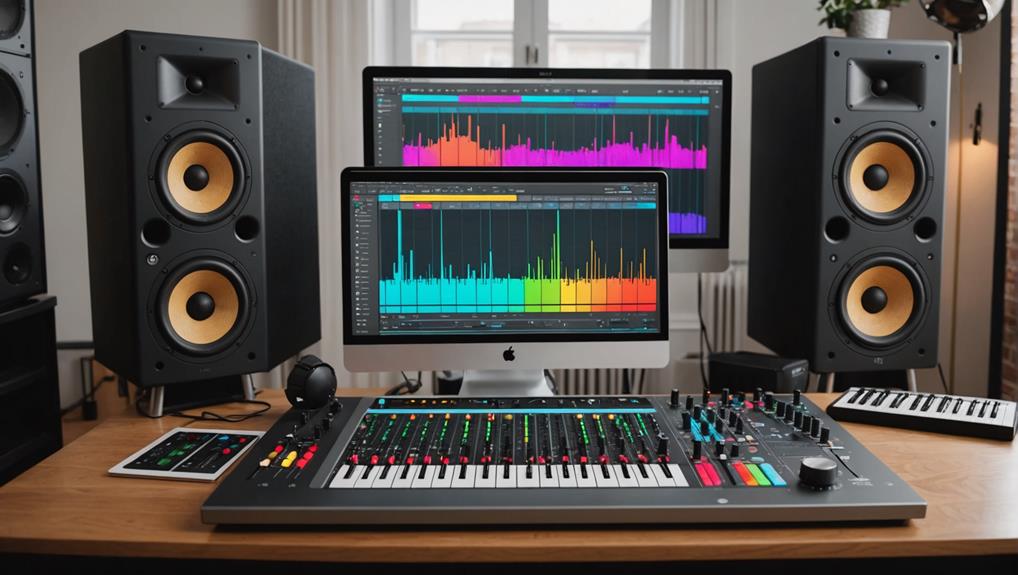
Effective EQ usage is essential for achieving a clear and balanced mix, allowing each instrument to shine without competing for space.
To use EQ effectively, start with subtractive EQ by cutting unwanted frequencies before boosting any. This approach helps maintain clarity and prevents muddiness in your mix.
Focus on the frequency range of each instrument, like keeping kick drums around 60-100 Hz, bass guitars in the 100-200 Hz range, and vocals between 1 kHz and 4 kHz for ideal balance.
Here are some key tips to take into account:
- Use a high-pass filter on non-bass instruments to remove unnecessary low frequencies.
- Avoid excessive boosting; aim for subtle cuts and boosts of 2-3 dB.
- Utilize spectrum analysis tools to monitor frequency distribution visually.
Control Dynamics Properly
Controlling dynamics properly is important for achieving a polished mix that allows all elements to coexist harmoniously. By using compression effectively, you can reduce the volume of louder sounds and guarantee a more consistent overall level. This prevents any audio tracks from overpowering the mix, which is essential for maintaining a balanced mix.
When mixing music, aim for a dynamic range that enhances emotional impact. Keep the loudest parts peaking around -6 dB to -3 dB to allow for headroom before mastering. Techniques like bus compression can help create a cohesive sound across similar elements, such as drums or backing vocals. Additionally, consider utilizing sidechain compression to allow key elements, like vocals, to shine through by ducking competing sounds.
Regularly monitoring your mix at different volume levels is crucial, as it helps reveal dynamic issues that may not be apparent at louder levels.
Here’s a quick reference table for controlling dynamics:
| Technique | Purpose | Tip |
|---|---|---|
| Compression | Reduce peaks and control dynamics | Use a slow attack for natural sound |
| Sidechain Compression | Make space for key elements | Duck competing tracks during vocals |
| Bus Compression | Create a cohesive sound across elements | Apply to similar audio tracks together |
Implement Panning Techniques
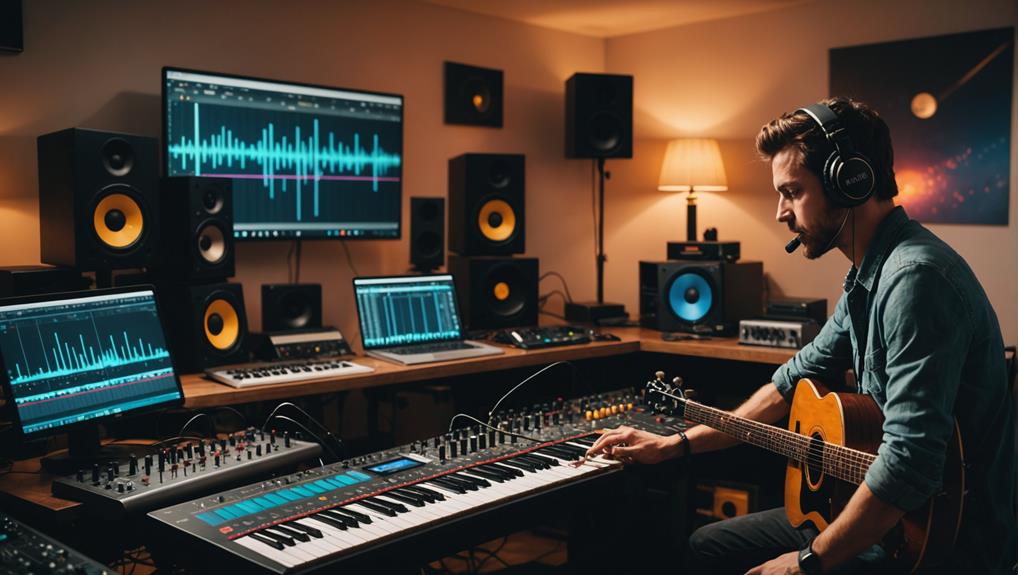
Panning techniques can greatly enhance your mix by positioning sounds within the stereo field, creating clarity and a sense of space. It’s important to remember that bass elements should generally remain centered, while higher frequency instruments can be panned across the left and right channels. This approach helps establish balance and prevents clutter in your mixing process.
Here are some tips to evaluate when implementing panning techniques:
- Use the 50/50 panning method to achieve an equal distance between instruments on both sides, ensuring a balanced sound.
- Apply subtle panning on background vocals or instruments to expand the soundstage without overwhelming the listener.
- Maintain a cohesive sound by avoiding extreme panning, which can create a disjointed listening experience.
Automate for Expressiveness
Automation adds a dynamic layer to your mix, allowing you to emphasize key moments and shifts that enhance emotional impact. By utilizing volume automation, you can highlight instrumental sections during vocal gaps, keeping your listeners engaged and excited for the pivotal moments in your track. This technique guarantees that every element stands out when it matters most.
You can also implement effect modulation through automation. Varying reverb wetness or delay feedback creates movement and depth, making your mix feel more alive and expressive. This engagement draws listeners in and keeps them invested in your music.
Don’t forget about EQ settings—you can fine-tune them dynamically to emphasize or reduce specific frequencies at different points in the song. This enhances clarity and balance, guaranteeing each element shines through without clashing.
Throughout the mixing process, revisit and adjust your automated parameters regularly. Doing so guarantees they align with the overall narrative and emotional arc of your track, leading to a polished final product that resonates with your audience.
Embrace automation to take your mixing game to the next level, transforming your music into an enthralling experience.
Regularly Reference Professional Mixes
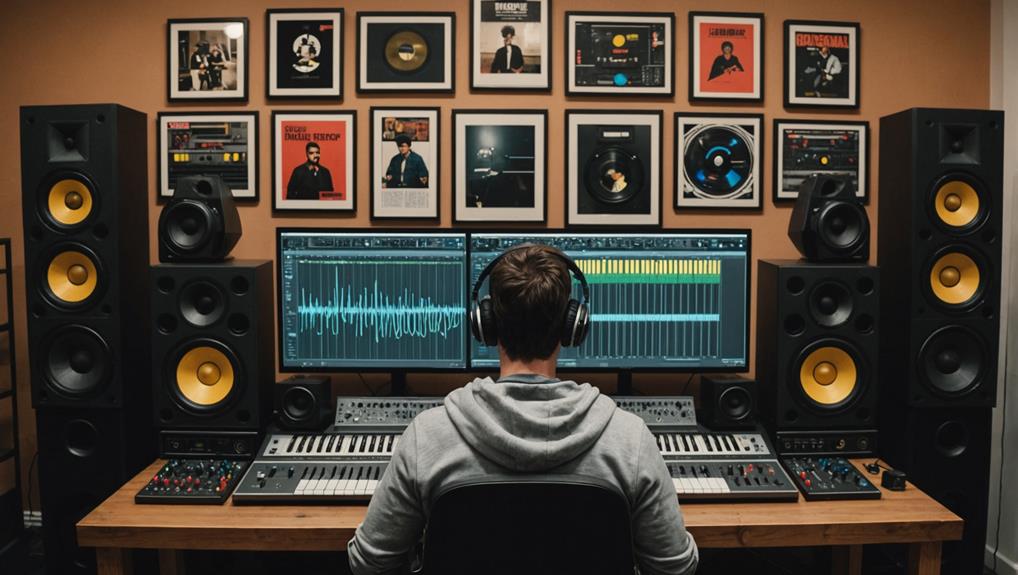
Regularly referencing professional mixes sharpens your critical ear, helping you identify areas for improvement in your own work. By incorporating reference tracks into your home studio mixing workflow, you can assess your mix against industry standards and make necessary adjustments.
Here are some key benefits of this practice:
- Comparative Analysis: Reference tracks provide benchmarks for bass levels, vocal presence, and stereo imaging.
- A/B Testing: Regularly comparing your mix can highlight frequency imbalances and dynamic inconsistencies that need addressing.
- Volume Consistency: Listen to reference tracks at the same volume as your mix to avoid volume bias, ensuring a fair assessment of sound quality.

